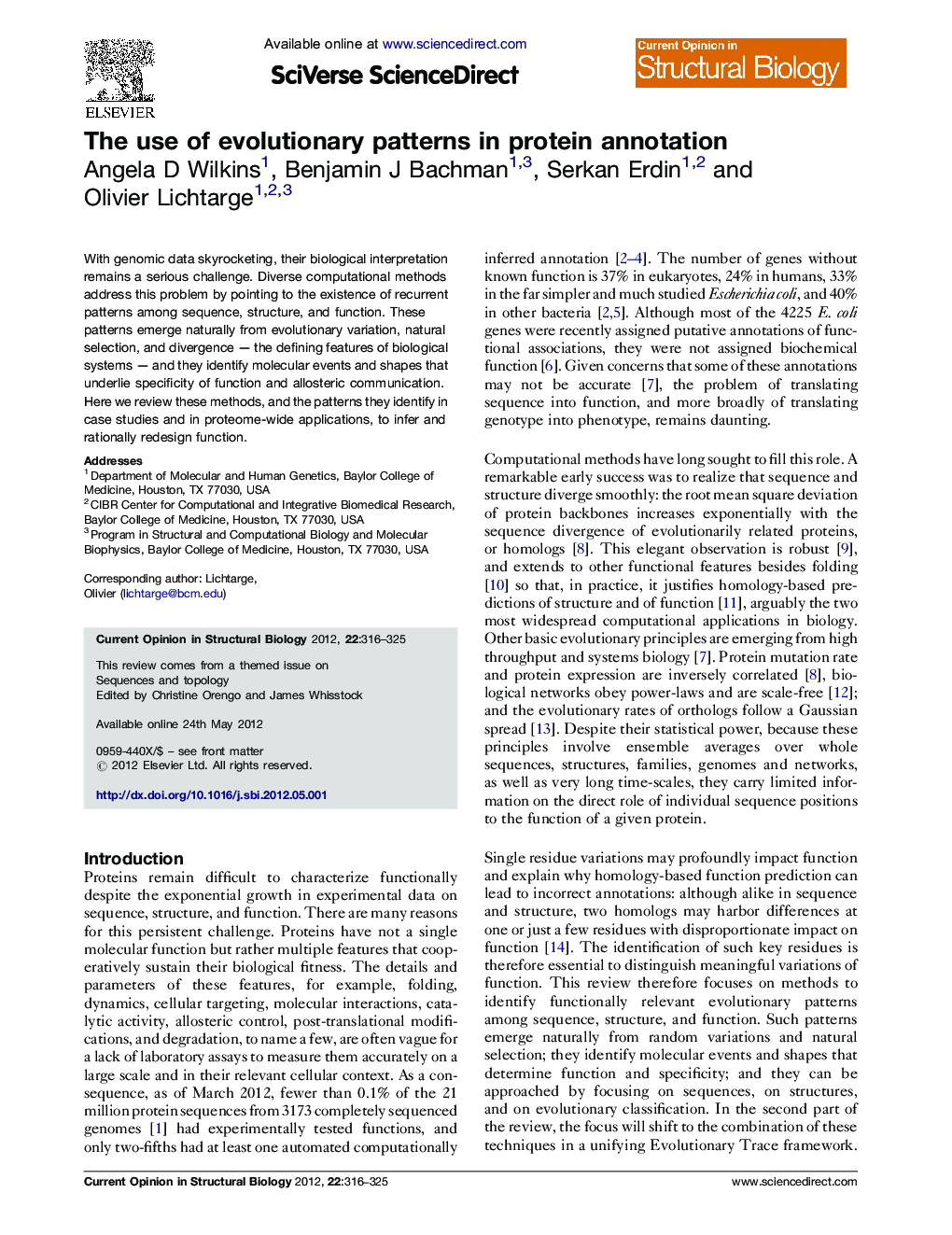| Article ID | Journal | Published Year | Pages | File Type |
|---|---|---|---|---|
| 1979084 | Current Opinion in Structural Biology | 2012 | 10 Pages |
With genomic data skyrocketing, their biological interpretation remains a serious challenge. Diverse computational methods address this problem by pointing to the existence of recurrent patterns among sequence, structure, and function. These patterns emerge naturally from evolutionary variation, natural selection, and divergence — the defining features of biological systems — and they identify molecular events and shapes that underlie specificity of function and allosteric communication. Here we review these methods, and the patterns they identify in case studies and in proteome-wide applications, to infer and rationally redesign function.
► Evolutionary patterns in sequences, structures, and phylogenomic classifications can predict some aspects of protein function. ► These patterns can be global in nature, such as in folds and profiles, or local, such as in motifs and templates. ► The Evolutionary Trace (ET) integrates in a single framework the analysis of these different types of functionally relevant patterns. ► ET residues cluster in structures and map out catalytic sites, binding interfaces and allosteric pathways and their specificity determinants.
